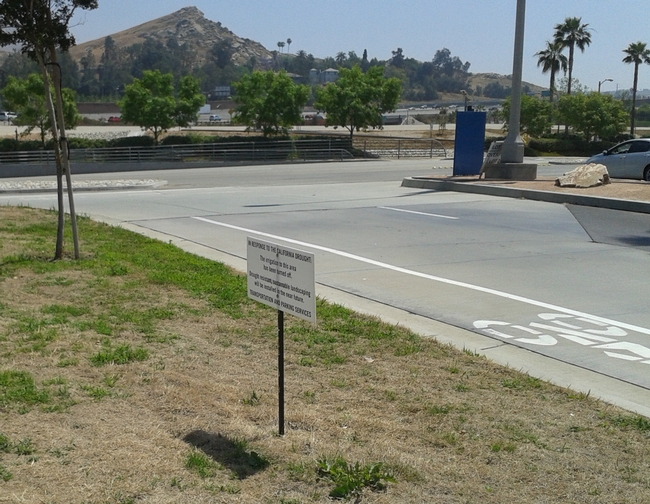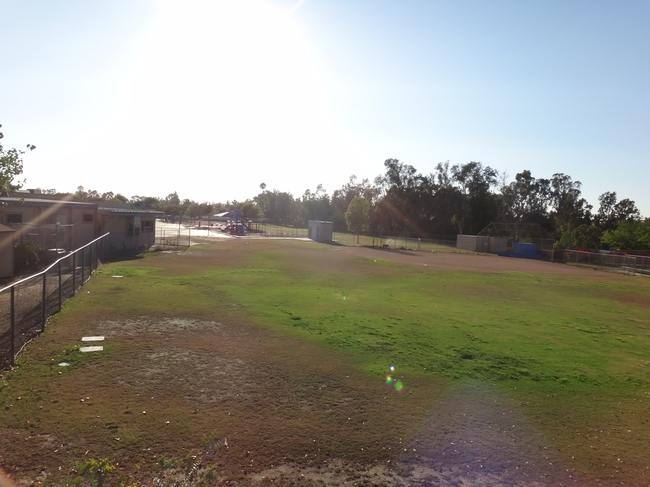On April 1, 2015 Governor Brown mandated a 25% water reduction in urban water use. While you may have seen the news articles about some private citizens or even some public areas being irrigated like water is an unlimited resource, my observation is that most homes and public areas are in fact reducing their outdoor water use.
However, there were some problems that are coming along with that. I first noticed it when I was walking to the UC Riverside campus on April 14. The landscapers had cut off the water to the medians so all the turf was dead but now some drought tolerant weeds were growing. I think the campus had cut off irrigation to “non-essential” areas so that they could maintain adequate irrigation level in other places like the sports turf.
More recently, I have been noticing that many of the homes with lawns are reducing or cutting off their water. The same holds true for some parks and schools. As I saw at UCR, while the turf is dying out, the area is getting weedier.
What are the mid-term consequences as related to weeds due to the change in irrigation? In my opinion, there could be an increased use of herbicides if we do get a wet winter. The turf will not be competitive enough to reduce weed pressure and the weeds should do quite well. Also, we are seeing that in some areas such as parks and schools there is a species shift from cool season turf (tall fescue) being the dominant turf in parks to more competitive warm-season kikuyugrass.
As we learn to modify our irrigation practices we need to be aware that these changes will have an impact on weed pressure and species shifts. As we move into this new paradigm we will have to adapt our weed management plans and put more emphasis on soil moisture and irrigation amount and timing in that plan.

